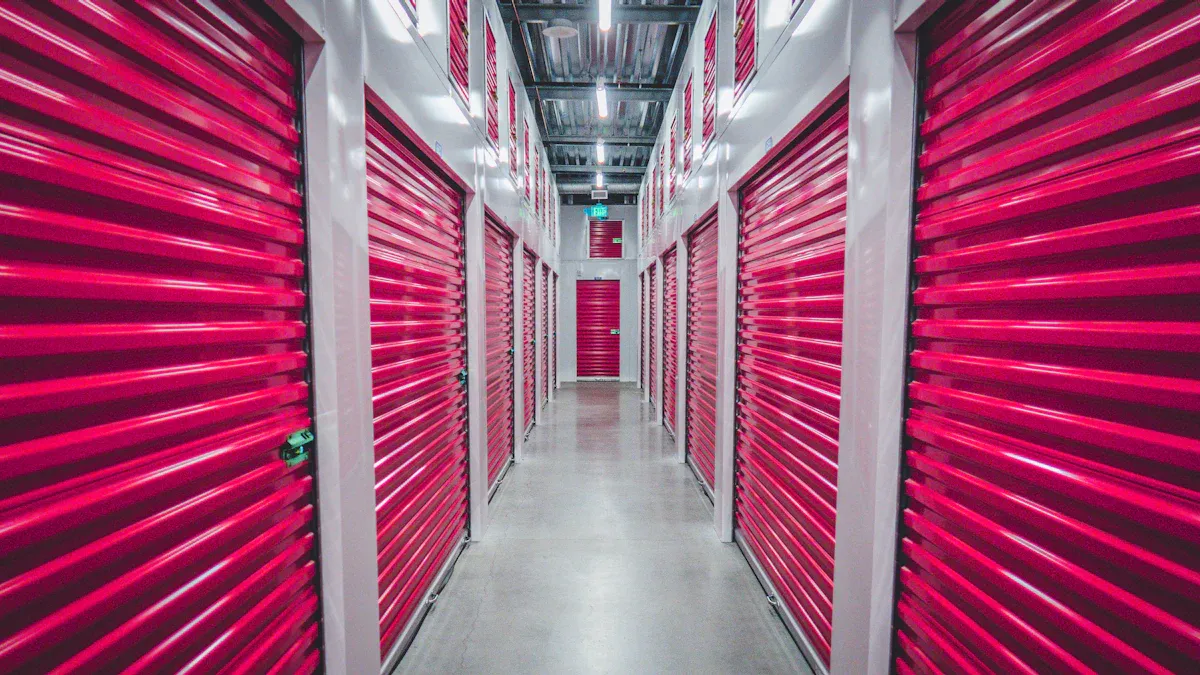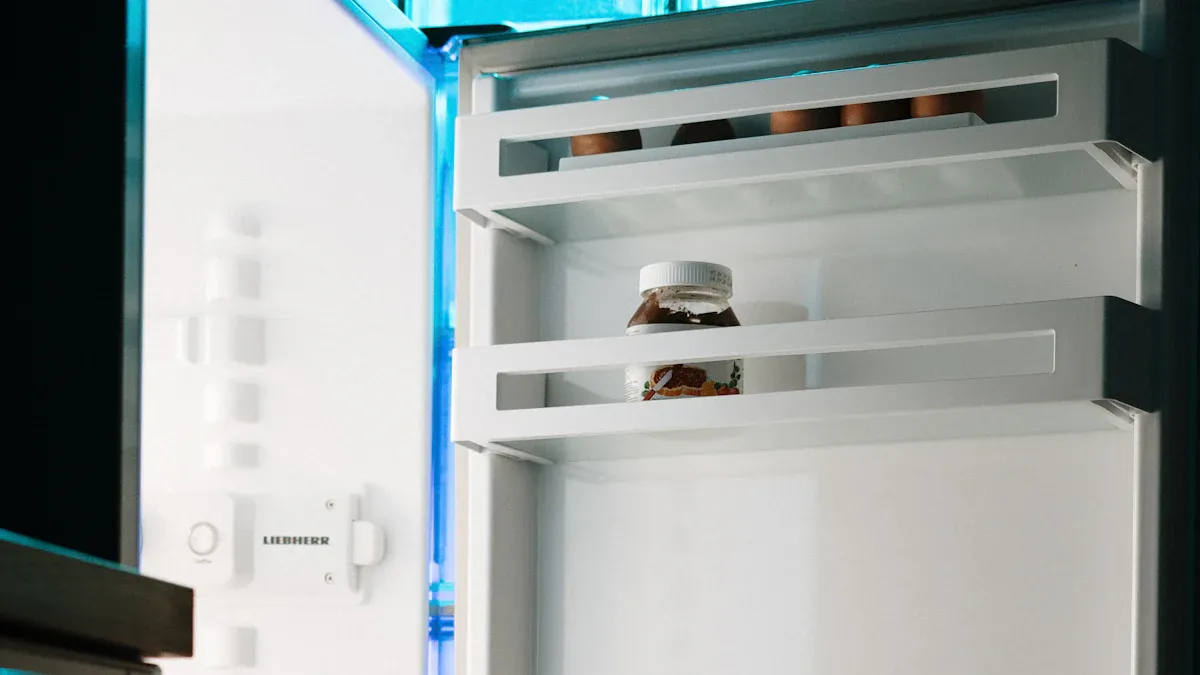What is a Walk-In Freezer Room and How Does It Work

A walk-in freezer room serves as a spacious, temperature-controlled storage solution specifically designed to freeze and preserve perishable goods. With its ability to maintain sub-zero temperatures, a walk-in freezer room ensures the freshness and longevity of items over extended periods. These freezer rooms are essential in industries such as food service, pharmaceuticals, and floristry, where reliable cold storage is a necessity. Unlike traditional freezers, a walk-in freezer room provides ample space for bulk storage, making it a critical component of commercial refrigeration. Its role in protecting the quality and freshness of sensitive products makes a walk-in freezer room indispensable for many businesses.
How Does a Walk-In Freezer Room Work?

Key Components
Insulated Panels
Insulated panels form the backbone of a walk-in freezer. These panels trap cold air inside and block warm air from entering. Materials like polystyrene and polyurethane are commonly used for their excellent thermal resistance. Proper insulation minimizes energy loss, ensuring your walk-in freezer operates efficiently.
Refrigeration System
The refrigeration system is the heart of a walk-in freezer. It removes heat from the interior, maintaining the desired temperature. Evaporator fans circulate cold air evenly, while the system expels warm air outside. This process ensures consistent freezing conditions, crucial for preserving perishable goods.
Door Seals and Gaskets
Door seals and gaskets prevent air leaks, which can compromise the internal temperature. Over time, these components may wear out, so regular checks are essential. A well-sealed door keeps your walk-in freezer energy-efficient and reliable.
Temperature Control Systems
Temperature control systems, including thermostats, monitor and regulate the internal environment. They adjust the refrigeration system as needed, ensuring the freezer maintains sub-zero temperatures. This precision helps prevent spoilage and extends the shelf life of stored items.
The Freezing Process
Maintaining Sub-Zero Temperatures
Walk-in freezers operate at temperatures ranging from -10°F to -40°F. The refrigeration unit cools the air by removing heat, while evaporator fans distribute the cold air evenly. This process ensures a stable environment for freezing and storing goods.
Role of Insulation in Temperature Retention
Insulation plays a vital role in maintaining the freezer's efficiency. It prevents cold air from escaping and blocks warm air from entering. High-quality insulation, such as polyurethane foam, reduces energy waste and keeps operational costs low.
Energy Efficiency
Modern Energy-Saving Technologies
Modern walk-in freezers incorporate advanced technologies to save energy. High-efficiency compressors and variable-speed options adjust output based on demand, reducing energy consumption. Improved insulation materials, like extruded polystyrene, also enhance energy efficiency.
Importance of Proper Installation
Proper installation ensures your walk-in freezer operates at peak efficiency. Factors like insulation quality, door sealing, and location significantly impact energy use. A well-installed freezer minimizes heat transfer, stabilizes internal temperatures, and lowers energy costs.
Common Uses of Walk-In Freezer Rooms

Walk-in freezer rooms play a vital role in various industries, offering reliable cold storage solutions for preserving goods. Their ability to maintain consistent temperatures makes them indispensable for businesses requiring efficient food storage or temperature-sensitive preservation.
Food and Beverage Industry
Storage of Frozen Goods
In the food and beverage industry, walk-in freezers are essential for extending the shelf life of products. By maintaining optimal temperatures, they prevent freezer burn and slow down product deterioration. This helps reduce food waste and ensures better inventory management through effective stock rotation. You can store consumable products for extended periods without compromising quality, making walk-in freezers a cornerstone of food storage.
Applications in Restaurants and Supermarkets
Walk-in freezers provide ample storage space and easy access, making them ideal for businesses with high stock turnover. In restaurants, they preserve ingredients, meals, and beverages, ensuring freshness for customers. Supermarkets rely on walk-in freezers to store large quantities of perishables, maintaining product integrity. The table below highlights additional applications:
Industry | Application Description |
|---|---|
Food service | Preserve ingredients, meals, and beverages. |
Supermarkets | Store large quantities of perishables. |
Food processing | Maintain the freshness of products during processing stages. |
Hotels | Stockpile food items and beverages for guests. |
Pharmaceutical and Medical Industry
Preservation of Vaccines and Medicines
Walk-in freezer rooms are critical for preserving vaccines and medicines. Precise temperature control ensures these sensitive materials remain effective. Advanced monitoring systems maintain the integrity of stored items, helping you comply with regulatory standards and enhance patient safety.
Storage of Biological Samples
Medical research facilities depend on walk-in freezers for storing biological samples. These freezers provide consistent cold storage, which is crucial for maintaining the potency of samples. Their advanced systems ensure the preservation of sensitive materials, supporting breakthroughs in medical research.
Other Applications
Use in Floristry for Flower Preservation
Florists use walk-in cold rooms to keep flowers fresh for longer periods. The controlled environment slows down the natural aging process, ensuring flowers retain their beauty and quality. This makes walk-in cold rooms an excellent choice for floristry businesses.
Research and Laboratory Purposes
In research and laboratory settings, walk-in freezers store temperature-sensitive materials like chemicals and specimens. Their precise temperature control and reliable cold storage capabilities make them indispensable for scientific work.
Benefits of Walk-In Freezer Rooms
Large Storage Capacity
Bulk Storage Capabilities
A walk-in freezer offers the advantage of storing large quantities of goods in one place. This is especially useful during peak seasons when inventory levels are high. You can store bulk items like frozen foods, medicines, or biological samples without worrying about space constraints. The spacious design ensures that products remain organized and accessible, saving you time during retrieval.
Customizable Sizes
Walk-in cold rooms can be tailored to meet your specific storage needs. Modular designs provide flexibility, allowing you to scale up or down based on your requirements. For smaller businesses, compact cold rooms maximize space efficiency while maintaining functionality. These customizable options ensure that your walk-in fits seamlessly into your available space and operational workflow.
Key Features of Customizable Walk-Ins:
Compact options for efficient space utilization.
Rapid installation services for quick setup.
Precise Temperature Control
Consistent Temperature Maintenance
Walk-in freezers excel at maintaining even temperature control, which is critical for preserving sensitive items. Advanced refrigeration systems, including compressors, condensers, and evaporators, work together to regulate internal conditions. Air circulation systems ensure that cold air is evenly distributed, preventing temperature fluctuations. This consistency protects your products from spoilage and ensures their quality over time.
Prevention of Spoilage
Precise temperature control systems, such as microcomputer electrical controls and high-precision sensors, safeguard your inventory. These systems monitor and adjust the internal environment automatically, ensuring that perishable goods remain in optimal conditions. For example, vaccine cold rooms use intelligent controllers and alarms to maintain safety and compliance with health standards.
Operational Efficiency
Streamlined Inventory Management
Walk-in freezers simplify inventory management by offering organized storage and easy access. Increased storage capacity allows you to stock more products, especially during busy periods. Improved access for staff enhances productivity, while efficient stock rotation minimizes waste and ensures compliance with health regulations.
Operational Benefits:
Enhanced stock rotation reduces waste.
Flexible storage options accommodate various product types.
Easy access improves staff efficiency.
Energy-Efficient Designs
Modern walk-in freezers incorporate energy-saving features that reduce operational costs. High-quality insulation minimizes energy loss, while efficient refrigeration units, such as variable-speed compressors, optimize energy use. LED lighting further lowers costs by emitting less heat and consuming less power.
Feature | Benefit |
|---|---|
Maintains consistent internal temperatures, reducing refrigeration cycles. | |
Efficient Refrigeration Units | High-efficiency compressors and variable speed options conserve energy. |
LED Lighting | Lowers operational costs by emitting less heat and using less energy. |
By investing in energy-efficient designs, you not only save money but also contribute to a more sustainable operation.
Maintenance, Safety, and Cost Considerations
Maintenance Tips
Regular Cleaning and Inspections
Maintaining your walk-in freezer starts with regular cleaning and inspections. You should clean spills, dirt, and spoiled products frequently to prevent buildup. Use warm water and mild detergent instead of harsh chemicals to protect the surfaces. Cleaning the evaporator and condensing coils at least twice a year ensures proper airflow and efficiency. Additionally, inspect drain lines with a certified technician to avoid clogs. Quarterly checks of the door frame and hinges help maintain a tight seal, preventing air leaks.
Tip: Daily temperature checks can help you identify issues early, ensuring your walk-in operates at optimal settings.
Monitoring Energy Usage
Monitoring energy usage is essential for cost-effective operation. Regularly inspect refrigeration units, walls, floors, and ceilings for wear. Addressing issues like frost buildup or faulty seals promptly can reduce energy waste. Defrosting as needed and ensuring proper ventilation also prevent the unit from overworking. These practices not only save energy but also extend the lifespan of your walk-in freezer.
Safety Measures
Emergency Exit Mechanisms
Safety features in a walk-in freezer are non-negotiable. Every unit must have at least one door that opens from the inside or includes a release mechanism. A firefighter’s axe inside the freezer provides an additional layer of safety during emergencies.
Requirement | Description |
|---|---|
Door Mechanism | At least one door must open from the inside or have a release mechanism. |
Firefighter's Axe | A firefighter's axe must be present inside for emergencies. |
Staff Training for Safe Operation
Proper training ensures your staff can operate the walk-in safely. Employees should notify coworkers before entering and communicate their expected duration inside. Wearing warm clothing and non-slip shoes reduces the risk of cold stress and slips. Regular checks by coworkers on those inside the freezer enhance safety.
Cost Considerations
Installation Expenses
The initial installation of a walk-in freezer can be costly. Factors like size, insulation quality, and advanced features influence the price. Investing in energy-efficient models may increase upfront costs but offers long-term savings.
Long-Term Operational Costs
Operational costs often outweigh installation expenses over time. Regular maintenance reduces the need for repairs and extends the unit’s lifespan. High-quality materials lower the frequency of replacements, saving money in the long run. Efficient operation minimizes downtime and spoilage, enhancing profitability. By choosing energy-efficient designs, you can significantly cut utility bills while maintaining optimal performance.
Walk-in freezer rooms offer a reliable solution for preserving perishable goods. They enhance operational efficiency by providing ample storage space and maintaining consistent temperatures. This prevents fluctuations that could compromise product quality. You can also ensure compliance with health regulations, minimizing waste and maximizing profits.
Proper maintenance and safety measures are essential for optimal performance. Regular cleaning, inspections, and staff training help keep your freezer running efficiently and safely. For installation and upkeep, professional advice is crucial. Experts ensure proper site selection, insulation, and refrigeration unit setup, which are vital for energy efficiency and durability.
Tip: Investing in professional installation minimizes long-term costs and ensures your freezer operates at peak performance.
See Also
Choosing The Ideal Walk-in Cold Storage Solution
Determining Whether A Cold Room Or Freezer Fits You
Key Characteristics That Differentiate Cold And Freezer Rooms

